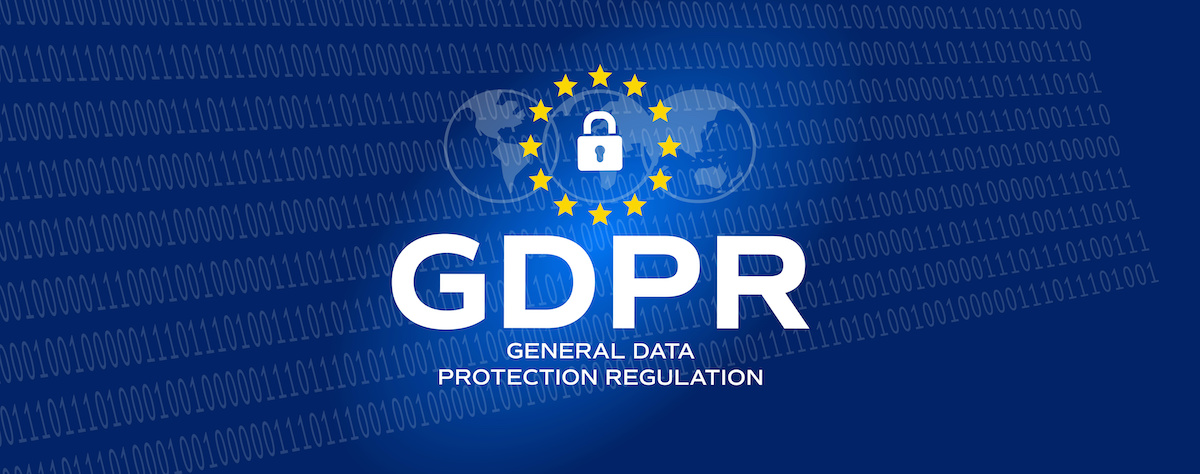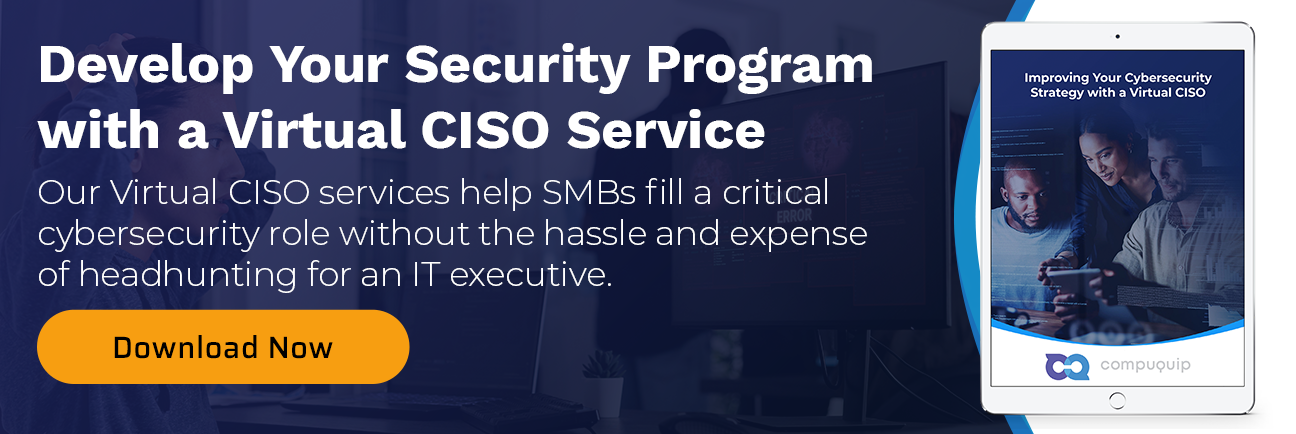How To Achieve IT Compliance (+ How It Differs from IT Security)
Achieving IT security compliance begins with understanding what types of compliance standards apply to your organization and how your enterprise can adhere to them in order to protect your reputation and your assets.
While both IT security and IT compliance overlap and work together for the benefit of fortifying your organization’s cybersecurity posture, there are distinctions to be made between the two.
What Is IT Compliance?
Information Technology compliance is the process of meeting a third party’s requirements with the aim of enabling business operations in a particular market or aligning with laws or even with a particular customer.
Essentially, a third party beyond your enterprise establishes a set of regulations and standards pertaining to your industry or simply your geographic location that you must meet in order to maintain compliance.
How Does IT Compliance Differ From IT Security?

Compliance sometimes overlaps with security—but the motives behind each are different. Compliance is centered around the requirements of a third party, such as:
- Industry regulations
- Government policies
- Security frameworks
- Client/customer contractual terms
On the other hand, IT security officers follow industry best practices to secure IT systems, especially at the organizational or enterprise level. Security professionals are constantly analyzing how to both prevent attackers from harming the company’s IT infrastructure or assets and mitigate the amount of damage that is done when an attack is successful.
Both IT security and IT compliance are important cornerstones in your enterprise’s overall cybersecurity posture, and they work well together to ensure your organization is protected against attackers while maintaining legal or industrial compliance.
Why IT Compliance Matters
Your enterprise should be compliant with each set of regulations and standards pertinent to your field and geographic location, if applicable, for a few reasons. IT compliance demonstrates to your peers and customers that you adhere to cybersecurity standards that are in place to protect your assets and ensure uniformity amongst businesses.
For example, if your organization accepts credit card payments but is not PCI compliant, that puts your reputation and your customers’ information at risk for significant damage.
IT compliance entails best practices for safeguarding your enterprise’s information as per a variety of compliance standards. Failing to meet these standards reveals holes in your organization’s cybersecurity posture that can be exploited by cybercriminals. Not staying up to par with whatever set of compliance measures can also result in hefty fines levied against your business.
Different Types of IT Compliance
As mentioned above, there are different types of IT compliance standards that change depending on the relevant industry or geographic location. Some of the most common sets of IT compliance standards include:
PCI DSS
The Payment Card Industry Data Security Standard is a major security standard that any business handling payment card information is expected to follow.
The Payment Card Industry Data Security Standard (PCI DSS) is not a government-mandated compliance standard, but it is one that most businesses will have to meet. This is because major credit card companies like Visa and MasterCard require companies to have PCI DSS validation.
PCI DSS maintains a list of security requirements to help protect payment card data so it cannot be easily stolen from a business and used to commit fraud. The PCI Security Standards Council periodically releases new requirements and updates to PCI DSS, so it’s important for companies to continually revise their cybersecurity to identify gaps and opportunities for improvement to keep up with new versions of this compliance framework.
HIPAA
The Health Insurance Portability and Accountability Act (HIPAA) is a government-mandated compliance standard that affects businesses in the healthcare industry. As stated on HHS.gov, the HIPAA privacy rule affects the following types of organizations:
- Health plans
- Health care clearinghouses
- Health care providers who conduct certain financial and administrative transactions electronically. These electronic transactions are those for which standards have been adopted by the Secretary under HIPAA, such as electronic billing and fund transfers.
Basically, organizations that process patient data of any kind—whether it’s health information or payment information—have to abide by HIPAA’s privacy rules and compliance standards.
HIPAA provides compliance requirements for transactions and billing code standards, data privacy, data security, and breach notifications that organizations that process patient data must follow. Failure to follow HIPAA requirements can result in civil money penalties.
GLBA
The Gramm-Leach-Bliley Act (GLBA) covers the needs of information security for financial institutions—such as banks and insurance companies—to ensure the safety of their clients’ private data. Financial institutions covered by the GLBA must tell their customers about their information-sharing practices and explain to customers their right to "opt-out" if they don't want their information shared with certain third parties.
GDPR

The European Union’s General Data Protection Regulation (GDPR) guarantees the rights of “data subjects” of whom your organization may be collecting information; this includes the right to deny the collection of personal data and the right to be forgotten upon request. Although GDPR is a foreign regulatory compliance standard, it targets any business that processes the personal data of EU citizens.
So, if your business regularly handles the personal data of anyone from the European Union, you can expect that these regulatory compliance standards will be applied to it. Since its inception, major companies have been hit with massive fines for GDPR compliance breaches—such as the £183 million fine that was proposed for British Airways (about $221.2 million US); the fine was later reduced to a meager £20 million.
How to Start a Cybersecurity Compliance Program at Your Enterprise
There are a few key steps to implementing a cybersecurity compliance program at your enterprise. Here’s where to start:
Identify What Type of Data You Work With In Order to Know Which Requirements Might Apply
Before you can determine which compliance standards you need to adhere to, you need to know what type of information you work with, store, process, etc.
To start with, every state in the U.S. has data breach notification laws that require you to notify customers in the event that their personal information is compromised. You can find the specific laws and requirements for your state here.
Compliance requirements can vary vastly from state to state, and some apply regardless of whether your business is located in the state. For instance, The California Consumer Privacy Act and the NYDFS Cybersecurity Regulation impose requirements that can apply to your business in any state if you deal with data pertaining to these acts. If your business deals with financial information of a resident of New York, for example, you would be subject to the set of requirements laid out by the NYDFS Cybersecurity Regulation regardless of which state your business is in.
Appoint a CISO—or a vCISO
If your enterprise can’t justify hiring a six-figure CISO to manage cybersecurity and compliance, consider hiring a Virtual CISO (vCISO). Employees in the role of vCISO build out the organization’s cybersecurity plan and actively maintain it to adapt to a variety of factors, ranging from legislative changes to new types of security threats. Additionally, the vCISO presents the organization’s state of information security to the organization’s board, executive team, auditors, regulators, and other pertinent leadership.
Ultimately, though, any employee with the right knowledge and work ethic can be appointed to manage cybersecurity as a part-time duty. By appointing an individual to be responsible for organizational cybersecurity and compliance you can get regular updates regarding the state of your cybersecurity program and compliance efforts. Furthermore, other employees know who to contact in the event of a suspected breach.
Conduct Risk and Vulnerability Assessments
Almost every major cybersecurity compliance requirement requires a risk assessment and vulnerability assessment. A cybersecurity risk assessment is a form of IT security testing used to identify and evaluate potential vulnerabilities and threats to an organization’s information systems, IT operations, and data assets.
They can be applied to an organization as a whole or focus on specific departments, systems, or processes. These are critical in determining what your organization’s most critical security flaws are, as well as what controls you already have in place.
Implement Policies, Procedures, and Process Controls
Cybersecurity and IT compliance aren’t just about technology; having policies and procedures in place to mitigate risk is also crucial for both compliance and safety. For example, no technical safeguard in the world can stop an employee who is determined to download malware onto corporate computers or visit risky websites.
Some examples include:
- Mandatory employee cybersecurity training
- Fully documented policies and procedures
- Audit and accountability processes
- Conducting risk and vulnerability assessments
Review, Test, and Realign
As the final, continuous step of implementing a cybersecurity compliance program, review applicable requirements that you need to meet and ensure that you regularly test your controls. As businesses change and expand, it can be easy to let cybersecurity slip; by conducting regular tests, you can make sure your organization stays compliant. It’s smart to continually evaluate compliance, too, especially as new requirements are implemented and existing ones change.
Compuquip Cybersecurity is a Florida-based managed security service provider that is trusted by organizations throughout the nation. Compuquip offers virtual CISO (VCISO) and security program development services that help organizations establish mature and reliable cybersecurity programs to protect their businesses against modern cyber threats.
If you need help checking your network security compliance needs and bringing your cybersecurity up to code, contact Compuquip Cybersecurity today!

